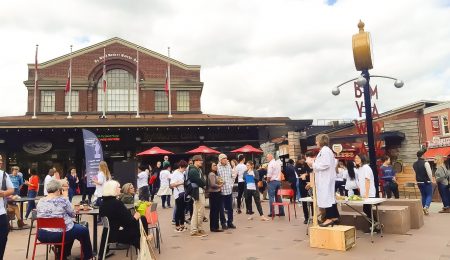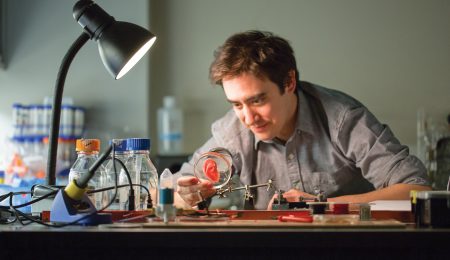If successful, these viruses could become an effective therapy in fighting breast and ovarian cancers providing hope to those who need it the most.
science
Thirty years after the Polytechnique massacre in Montreal, women in the world of STEM continue to face gender inequality and discrimination. Students in STEM at the U of O reflect on the tragedy and highlight issues persisting within their fields.
“We care for patients — we have been for 25 years — using basic science and role models with collaborators in various fields including chemistry, molecular biology, imaging, and others, to try and really characterize the changes between mobility to better prevent and treat them,” says U of O professor Guy Trudel.
Saturday’s event featured 12 scientists giving hour-long synopses of their area of research and looked to spark interest in younger generations to pursue futures in science, technology, engineering, medicine and math.
Comprehension on the chemical reactions was lowest when students only looked at structural components.
NSERC’s vision is to provide financial support to students in the hopes of new discoveries and innovative ideas to help advance the fields of science and engineering.
The possibility of a bionic eye might, in fact, be more of a reality than one would expect, thanks to Ross Cheriton, a PhD student at the University of Ottawa’s Chair for Research in Photonics.
Recently, the Ontario government floated the idea of scrapping the mandatory half-credit that is grade 10 civics class, where high school students are supposed to learn what it means to be a Canadian citizen. Is this a good idea?
From Oct. 14 to 15, the semi-annual deCODE: Hackathon will be returning to the University of Ottawa, this time with a few changes—namely, a smaller group of participants to boost competition.
This November, the Royal Society of Canada (RSC), the oldest scholarly group in the country, will be welcoming University of Ottawa history professor Dr. Chad Gaffield into their midst as their new president.
University of Ottawa associate professor of physics Andrew Pelling does more than just teach. Outside of his day job, he also runs the Pelling Lab at the U of O, where he grows human ears using apples.
The Oculus Rift isn’t just groundbreaking tech for playing video games. It can also help us bring porn and long-distance relationships into the future.
Study looks to prepare astronauts for Mars while improving life on Earth All researchers are told to shoot for the moon, but one University of Ottawa team thinks that isn’t quite far enough. U of O researchers will be working with astronauts at the International Space Station (ISS) to learn about how changes in bone …
About a 1/3 of the general public don’t trust genetically modified food. However, 9 out of 10 scientists say that they are perfectly safe. Who should you believe?
The University of Ottawa Heart Research Institute (UOHRI) received recognition for its groundbreaking research on genetic predisposition to coronary artery disease published in Nature Genetics on Sept. 7.
“There weren’t any other groups focusing on these issues. As a scientist with strong interests in policy and politics this is an area I’m really passionate about, so I decided to start E4D,” she continued.
“They have to vote if they care at all about the future,” he said. “What they do or do not do will reverberate through your entire lives.”
All four artists featured in the exhibit are showing paintings inspired by elements of varying disciplines, including biology, the human body, psychology, and landscape.
If you ever find yourself running away from a zombie horde, you probably won’t be thinking about math. But maybe you should be.
Human beings use their brains to their full potential all the time. Yes, that’s a complete 100 per cent.
The five year grant will allow the researchers to test the theory that there is an immunological link between Parkinson’s disease, Crohn’s disease and leprosy.
Although these stats may not matter to you personally as a healthy young adult, they certainly matter to the sick, the elderly, and the young we encounter everyday at school, at the mall, at the grocery store, and on the bus.
This technology could save thousands of lives annually in Canada alone, and it should be available to those who need it as soon as possible.
Hundreds of federal science employees, students, and supporters in Canada came together Sept. 16 in protest of the alleged muzzling of scientists by the Harper government that has occurred in recent years.
Reports show that this institution would cost $50 million to shut down. From an economic point of view, closing it down makes little sense. From a scientific standpoint, we would be losing an invaluable research facility that helped maintain freshwater in Canada and shaped the way the world protects its freshwater supply.


























